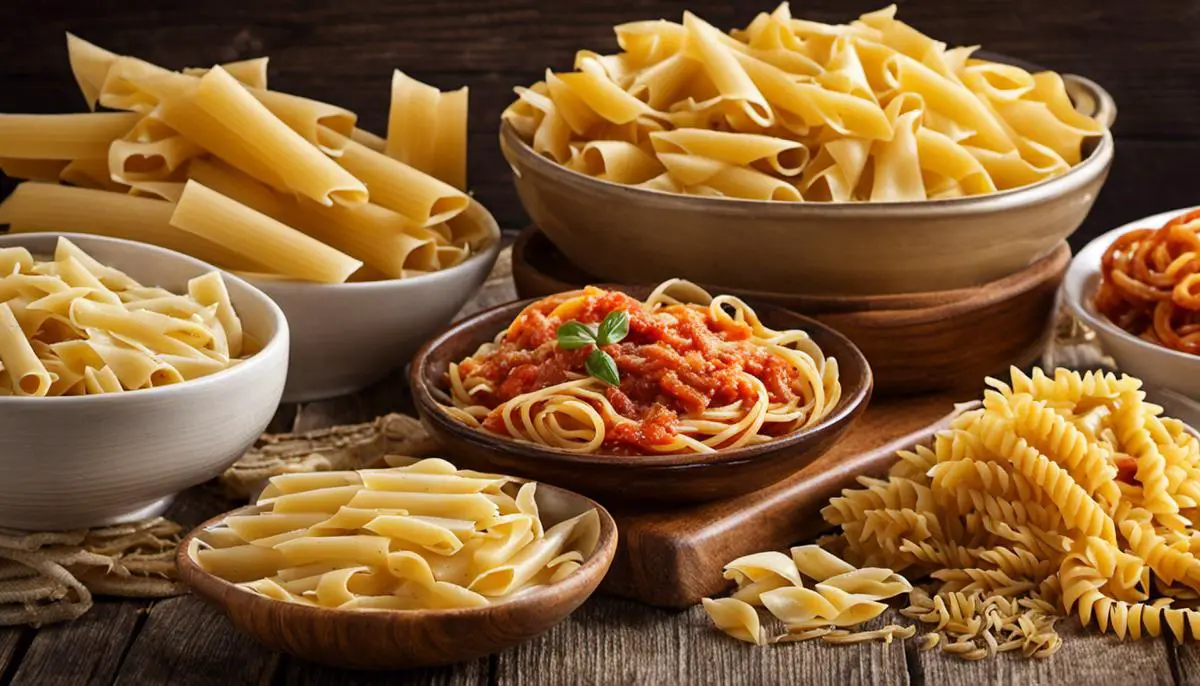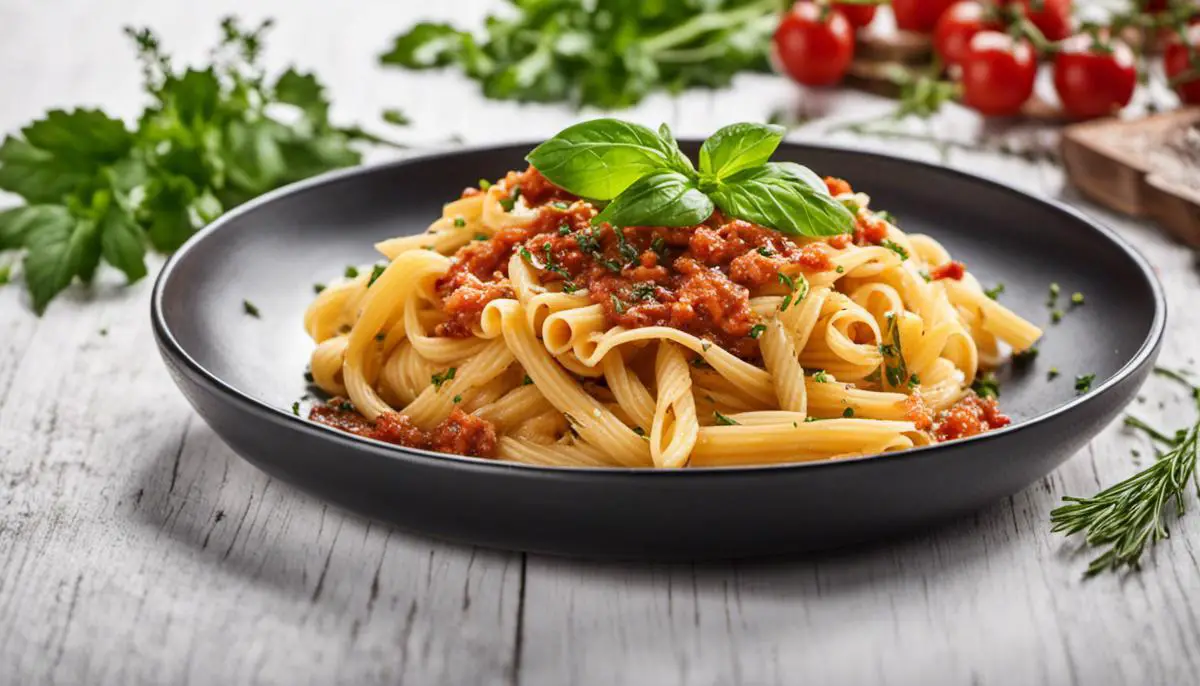Table of Contents
Your gateway to the world of authentic Italian gastronomy starts with mastering the art of cooking pasta. One may question the complexity, for it’s just boiling water and pasta, right? Quite the contrary – understanding the tally of diverse pasta types and grasping the delicate balance of the perfect cooking technique defines your journey towards creating exemplary pasta dishes. From penne to spaghetti, there’s a spectrum of pasta shapes, each serving its unique purpose in the landscape of Italian cuisine, and suitable for certain sauces over others. Meanwhile, cultivating the skill to achieve ‘al dente’ texture could turn an ordinary dish into a memorable Italian feast. Let’s journey through the charming world of pasta, unraveling its mysteries, one strand at a time.
Understanding Different Pasta Types
Get to Know Your Pasta: Spaghetti
Spaghetti is likely the most well-known type of pasta. Originating from Italy, it’s a go-to pasta for a myriad of dishes. With a long, thin, cylindrical shape, it’s the ideal choice for dishes that have a fluid sauce, such as the classic spaghetti bolognese or spaghetti with marinara sauce. It’s also perfect for olive oil-based sauces or carbonara.
Get Familiar With Penne Pasta
One of the most versatile pastas around, Penne comes in two main variants – smooth (lisce) or ridged (rigate). Their tubular design, angled ends, and ridges help them to hold heartier vegetable and meat sauces beautifully. They’re also a staple in baked pasta dishes like baked ziti or penne al forno due to their size and the ability to hold onto creamy sauces.
Discover the Delights of Fusilli
Fusilli is a curly pasta known for its ability to hold onto sauces between its spiral grooves. The corkscrew shape is especially well-suited for catching cheese, vegetables, and pieces of meat in their spirals, making this kind of pasta particularly delicious. Consider fusilli for pasta salads or pair it with thicker consistency sauces.
The Short but Sweet, Farfalle
Farfalle, or ‘butterflies’ in Italian, also known as bow-tie pasta, is great for a variety of dishes. The pinched center allows for a satisfying chew, while the winged edges are perfect for catching sauce and small diced ingredients. It works well in vegetable-based or cream sauces and it’s also a favorite in cold pasta salads.
Get Acquainted With Rigatoni
Rigatoni are a larger, wider form of penne, with a similar ridged exterior. This makes them great for heavy, robust sauces – namely meat and tomato-based ones, allowing the sauce to seep into and cling to the pasta. Rigatoni is also excellent in pasta bakes.
Explore the Versatility of Linguine
Linguine, meaning ‘little tongues’ in Italian, is a long and slim pasta, though wider than spaghetti. This pasta is best paired with seafood or pesto sauces as its flat shape helps it cling to the thin, oil-based sauces effectively.
Remember, the type of pasta you choose should complement your sauce and additional ingredients. The right combination can elevate your dish significantly. Happy cooking!

Learning the Perfect Pasta Cooking Technique
Gathering Your Ingredients and Equipment
To start, gather your cooking essentials. Your ingredient list is short: one pound of pasta (any kind you prefer), plenty of water, two tablespoons of salt, and your choice of sauce. For equipment, you need a large pot, a colander for draining, tongs or a pasta fork, and a timer.
Preparing Your Water
Place your large pot on the stove and fill it about three-quarters full with water – you want enough water for the pasta to move around but not so much that it overflows. Add your salt to the water, a crucial step that seasoned pasta chefs emphasize because it flavors the pasta. Turn on your stove to high heat and wait until the water begins to boil vigorously.
Cooking the Pasta
Once the water is boiling, add your pasta. Stir it gently using your tongs or a pasta fork to keep it from sticking together. The cooking time varies depending on the pasta type. Start your timer according to the instructions on the pasta package, usually between 8-12 minutes. This is crucial for achieving ‘al dente’ pasta – a state where pasta is cooked so as to be firm when bitten. Keep the stove on high heat throughout but be sure to stir the pasta occasionally.
Checking the Pasta
With about two minutes left on the timer, begin testing your pasta. Retrieve a piece, allow it to cool, and then bite into it. It should be tender but still have a slight bite to it – firm but not hard. Each minute, check a piece until it’s at your preferred texture.
Draining the Pasta
Turn off the heat and place your colander in the sink. Carefully pour the pasta into the colander, allowing all of the water to drain out. If you plan to use some pasta water in your sauce – a favorite Italian trick to add flavor and richness to the sauce- make sure to set some aside before draining.
Saucing Your Pasta
Transfer your drained pasta back into the pot, or if you’re using a heated sauce, into the saucepan. Quickly add your sauce (either homemade or store-bought), and stir to evenly coat the pasta. The amount of sauce depends on your preference, but a general rule of thumb is not to drown your pasta in it.
Storing Cooked Pasta
If you have leftovers, allow the pasta to cool completely before storing it in an airtight container in the fridge. To reheat, simply pop in the microwave or toss in a warm pan with a bit of oil or leftover sauce until heated through. Thoroughly cooked pasta, when properly stored, will keep for about 3-5 days in the refrigerator.

To wrap it up, mastering the artistry of cooking pasta isn’t a restricive recipe to follow, but an exciting and culinary adventure that awaits. The key secrets lie in understanding the varying attributes of pasta types and honing the all-important technique of cooking pasta to perfection. Comprehend the dance of the different pasta shapes with their best-suited sauces, and the staging of that splendid ‘al dente’ texture with precise timing and accompanying procedures. Remember that a great pasta dish is more than the sum of its parts. The crescendo of your pasta exploration only culminates when you’ve learned, cooked, and of course, consumed with passion, creating not just meals, but memories. Here’s to the artful delight of creating a perfect pasta dish, to achieving the luscious glory that is pasta done right.
